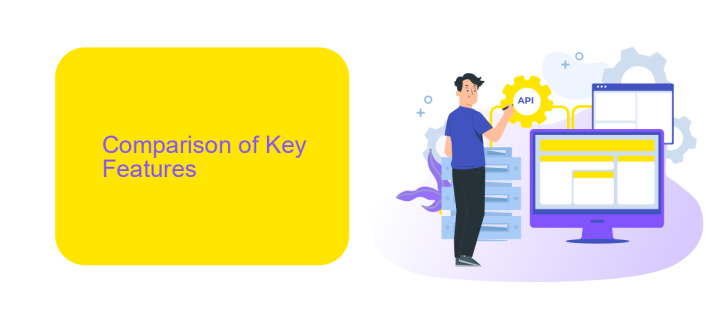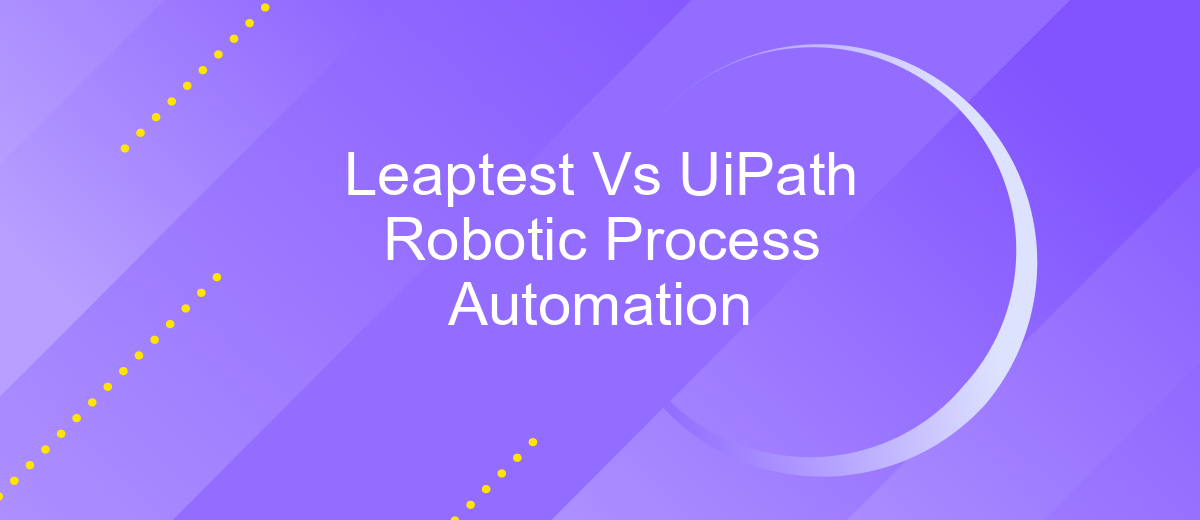Leaptest Vs UiPath Robotic Process Automation
In the rapidly evolving field of Robotic Process Automation (RPA), Leaptest and UiPath have emerged as two prominent contenders. Both offer robust solutions for automating repetitive tasks, yet they cater to different needs and user experiences. This article delves into a detailed comparison of Leaptest and UiPath, highlighting their features, strengths, and ideal use cases to help you make an informed decision.
Introduction to Leaptest and UiPath
Leaptest and UiPath are two prominent tools in the world of Robotic Process Automation (RPA), offering unique features and capabilities to streamline business processes. Leaptest focuses on providing a user-friendly, no-code environment for automating repetitive tasks, making it accessible for non-technical users. On the other hand, UiPath is known for its robust and scalable RPA solutions, catering to both small businesses and large enterprises.
- Leaptest: No-code automation, visual interface, easy to use, suitable for non-developers.
- UiPath: Comprehensive RPA platform, supports complex workflows, scalable, suitable for various business sizes.
Both tools offer integrations with various third-party services to enhance their automation capabilities. For instance, ApiX-Drive can be used to set up seamless integrations between these RPA tools and other software applications, ensuring smooth data flow and process automation. Whether you are looking to automate simple tasks or complex workflows, Leaptest and UiPath provide versatile solutions to meet your business needs.
Comparison of Key Features

Leaptest and UiPath Robotic Process Automation (RPA) both offer robust solutions for automating repetitive tasks, yet they differ significantly in their key features. Leaptest excels in its user-friendly, no-code interface, making it accessible to non-developers. It allows users to create automated tests through visual flowcharts, simplifying the automation process. On the other hand, UiPath provides a more developer-centric approach, offering extensive coding capabilities and advanced customization options. UiPath's platform is highly scalable, suitable for complex enterprise environments requiring intricate automation workflows.
In terms of integration capabilities, UiPath stands out with its extensive range of pre-built connectors and APIs, facilitating seamless integration with various third-party applications and services. Leaptest, while offering integration options, is more limited in this regard. For businesses seeking to streamline their integrations further, services like ApiX-Drive can be beneficial, enabling easy connection between Leaptest, UiPath, and other essential business tools. This can enhance the overall efficiency and effectiveness of the automation processes by ensuring smooth data flow across different platforms.
Use Cases and Industries

Both Leaptest and UiPath Robotic Process Automation (RPA) have a wide range of use cases across various industries, enhancing operational efficiency and reducing manual workload. These tools are particularly beneficial in sectors where repetitive tasks are prevalent and automation can lead to significant time and cost savings.
- Finance and Banking: Automating data entry, transaction processing, and compliance reporting.
- Healthcare: Streamlining patient data management, appointment scheduling, and billing processes.
- Retail: Managing inventory, order processing, and customer service automation.
- Manufacturing: Automating supply chain operations, quality control, and production scheduling.
- Human Resources: Simplifying employee onboarding, payroll processing, and performance management.
In addition to these industries, integration services like ApiX-Drive can further enhance the capabilities of Leaptest and UiPath by seamlessly connecting various applications and automating data transfers between them. This integration ensures that businesses can maintain a cohesive and efficient workflow, maximizing the benefits of RPA tools.
Pricing and Licensing

When comparing Leaptest and UiPath in terms of pricing and licensing, it's essential to consider the different models they offer. Leaptest generally follows a subscription-based model, providing various tiers based on the number of users and the complexity of the tasks. This allows businesses to scale their usage according to their needs without a large upfront investment.
UiPath, on the other hand, offers a more flexible licensing model that includes a community edition, enterprise edition, and various other options tailored to specific business requirements. The community edition is free and suitable for small teams or individual developers, while the enterprise edition is designed for larger organizations with more complex automation needs.
- Leaptest: Subscription-based, multiple tiers
- UiPath: Community edition (free), Enterprise edition (paid), and more
Both platforms also offer additional services and integrations to enhance their capabilities. For instance, ApiX-Drive can be used to streamline the integration process, allowing businesses to connect Leaptest or UiPath with other applications seamlessly. This ensures that your automation workflows are efficient and well-integrated within your existing systems.
Conclusion
In conclusion, both Leaptest and UiPath offer robust solutions for Robotic Process Automation (RPA), each with its own strengths and unique features. Leaptest excels in its user-friendly interface and visual approach to automation, making it accessible for users without extensive programming knowledge. On the other hand, UiPath stands out with its comprehensive suite of tools and capabilities, catering to more complex automation needs and offering extensive support and community resources.
Ultimately, the choice between Leaptest and UiPath depends on the specific requirements and expertise of your organization. For those looking to streamline processes and integrate various systems seamlessly, leveraging services like ApiX-Drive can further enhance the efficiency and effectiveness of your RPA implementation. ApiX-Drive simplifies the integration process, allowing for smooth data flow between different applications, ensuring that your automation efforts are both scalable and sustainable.


FAQ
What are the main differences between Leaptest and UiPath in terms of functionality?
Which platform is more suitable for non-technical users?
How do Leaptest and UiPath handle integration with other systems?
What support and training options are available for Leaptest and UiPath?
Which platform is more cost-effective for small to medium-sized businesses?
Apix-Drive is a universal tool that will quickly streamline any workflow, freeing you from routine and possible financial losses. Try ApiX-Drive in action and see how useful it is for you personally. In the meantime, when you are setting up connections between systems, think about where you are investing your free time, because now you will have much more of it.

